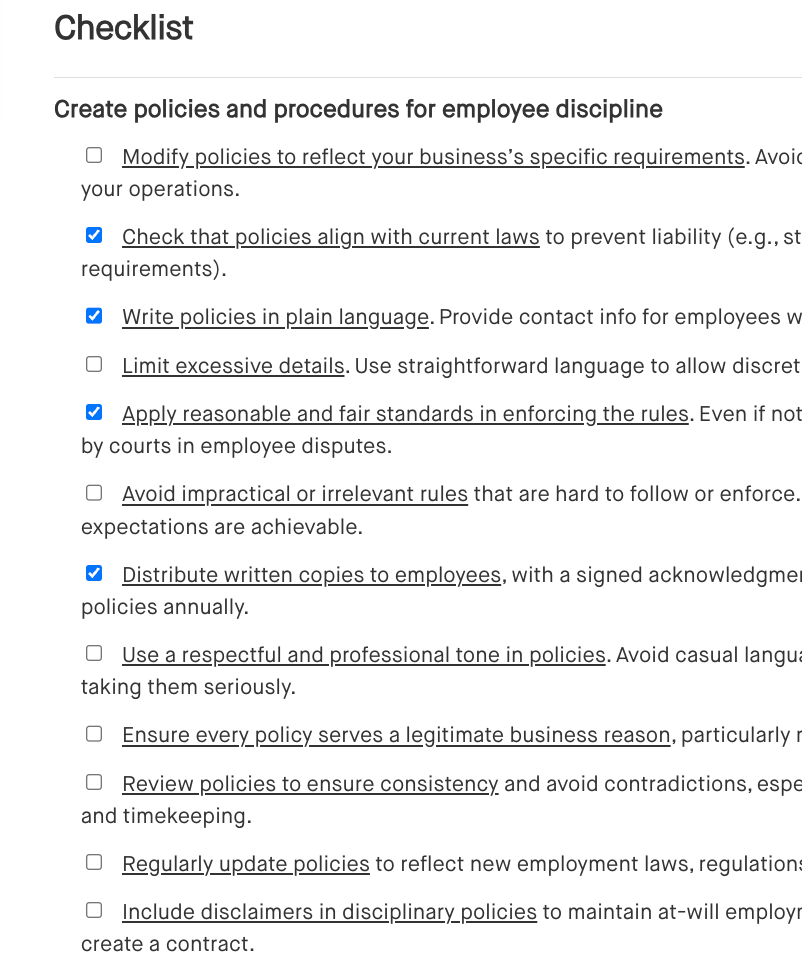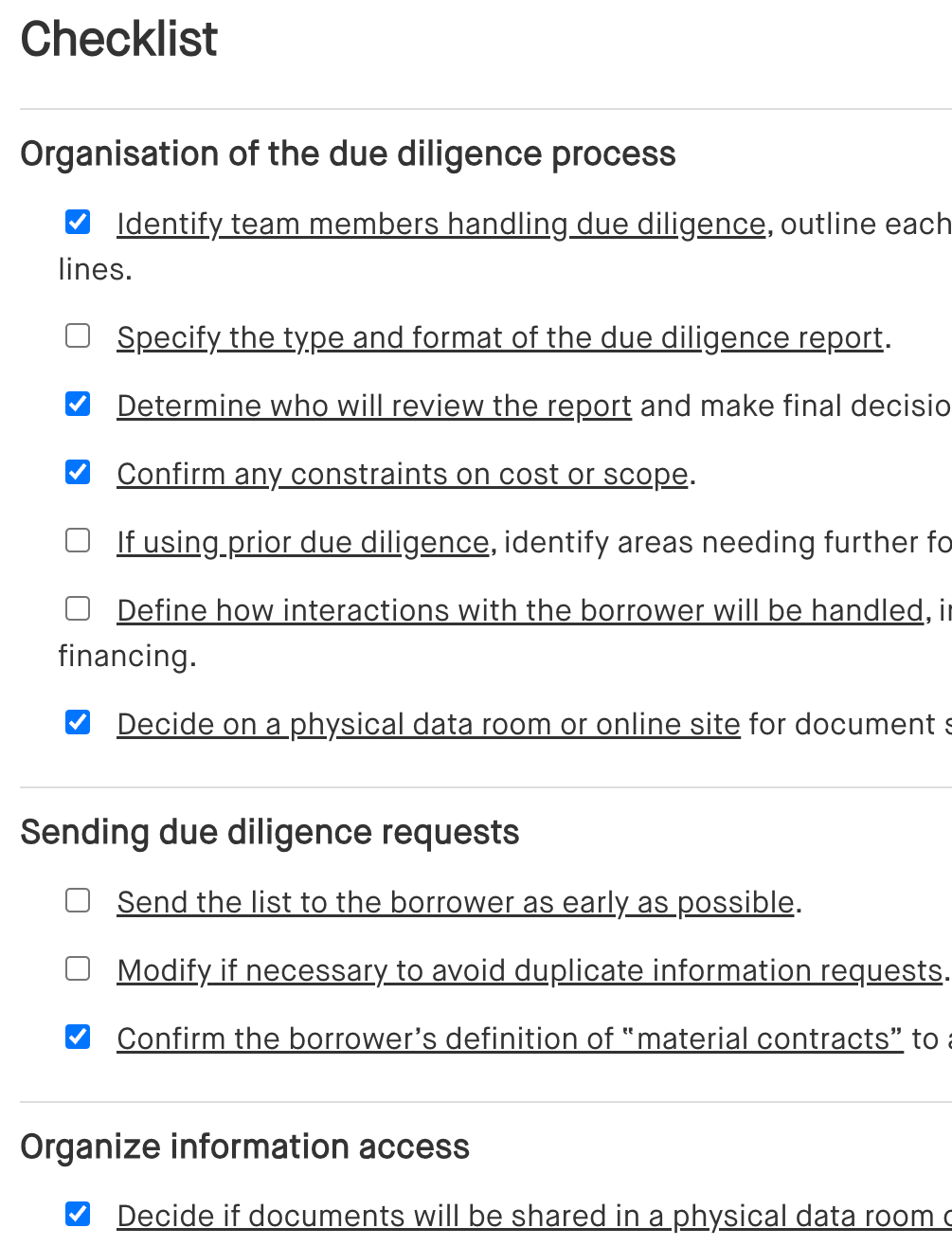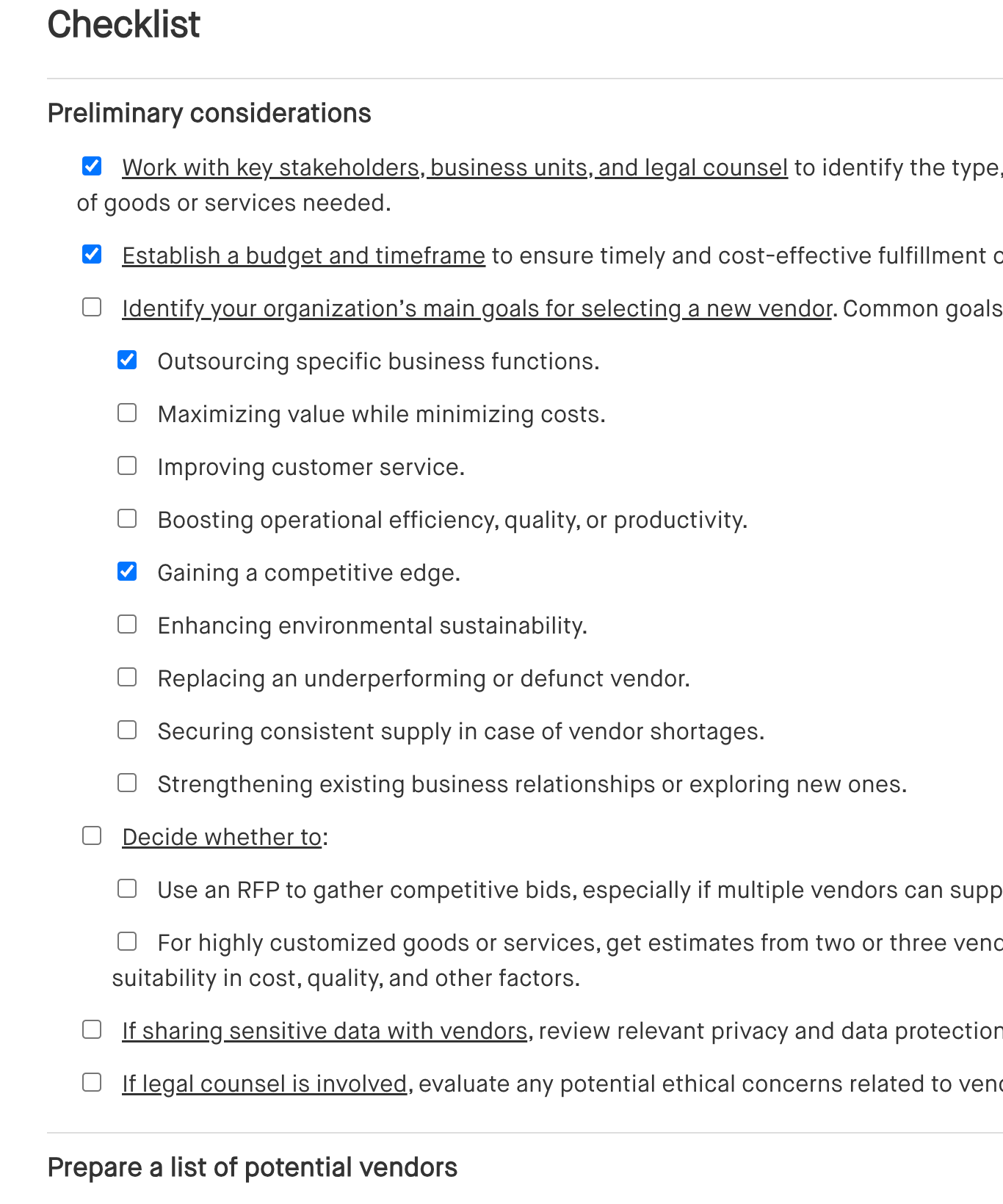Legal issues with user-generated content: Free checklist
Legal issues with user-generated content checklist
User-generated content (UGC) can enhance brand engagement, but it also introduces legal risks. This checklist helps you navigate potential issues with UGC, from compliance with intellectual property rights and data privacy laws to implementing safeguards against harmful content. It covers essential steps to protect your company from liability, including establishing terms of use, policies, and best practices for managing UGC on websites, social media, and apps.
Using this checklist ensures your company manages UGC effectively, minimizing legal risks while maximizing the benefits of user contributions.
How to use this legal issues with user-generated content checklist
To handle UGC legally and responsibly, follow these guidelines to maximize the checklist's effectiveness:
- Follow each step carefully: This checklist is designed to cover every aspect of UGC management. Start by identifying where your company collects UGC, then move through creating policies and updating terms of use to protect your company. Following each step in order ensures you address all critical areas, from legal disclaimers to user responsibilities.
- Engage legal and compliance teams: UGC management involves multiple departments. Involve legal counsel to ensure compliance with privacy and intellectual property laws, IT to enforce data security, and marketing to oversee influencer agreements. Collaboration across teams reduces legal risk and strengthens your UGC policies.
- Document and monitor policies: Keep records of policies, agreements, and actions taken regarding UGC. Regularly review and update these policies to ensure they remain relevant as laws and platforms change.
- Adapt it to your company: Tailor the checklist to fit your company’s specific needs and platforms. Different types of UGC and engagement (e.g., influencer partnerships, product reviews) may require unique terms or guidelines.
- Review regularly: Laws and regulations around UGC evolve frequently. Update this checklist periodically to ensure ongoing compliance with privacy standards, intellectual property rights, and platform-specific rules.
Checklist
Benefits of using a legal issues with user-generated content checklist
A legal issues with user-generated content checklist offers several advantages for companies handling UGC across websites, social media, and apps. Here’s how it helps:
- Minimizes legal risk: By following the checklist, you reduce the chances of infringing on privacy, intellectual property rights, and other legal areas associated with UGC, which protects your company from lawsuits and penalties.
- Protects your brand: Clear guidelines and terms of use for UGC help maintain brand integrity by filtering out harmful or offensive content and establishing user responsibilities. This safeguards your brand’s reputation and builds trust with your audience.
- Establishes structured policies: The checklist helps you create a strong foundation for UGC management, from influencer agreements to acceptable use policies, giving your team a consistent approach to handle content issues.
- Enhances compliance: The checklist covers requirements for privacy and data protection, ensuring you’re aligned with federal, state, and platform-specific regulations. It keeps you compliant with guidelines such as the FTC’s rules on endorsements and the DMCA for copyright protection.
- Simplifies response to issues: Having structured procedures and policies makes it easier to respond to legal challenges related to UGC, such as copyright claims or data privacy inquiries, allowing your team to act quickly and effectively.
Frequently asked questions (FAQs)
Q: Why does my company need a legal checklist for user-generated content?
A: A legal checklist helps protect your company from potential legal issues related to UGC, such as copyright infringement, privacy violations, and compliance with platform rules. It provides a clear process for managing these risks and safeguarding your brand.
Q: What types of UGC does this checklist cover?
A: This checklist covers a variety of UGC types, including blogs, videos, images, comments, reviews, social media posts, and contest entries. It helps you handle each content type in compliance with legal standards and best practices.
Q: Do I need this checklist even if we only use UGC on social media?
A: Yes, even if UGC is limited to social media, you still need policies in place to handle influencer disclosures, platform-specific rules, and user permissions. This checklist ensures your approach is thorough and legally sound across all UGC platforms.
Q: How often should we update our UGC policies?
A: Update your UGC policies at least annually, or sooner if laws and platform guidelines change. Regular reviews keep your policies compliant with the latest regulations and best practices for UGC management.
Q: How does this checklist help with influencer partnerships?
A: The checklist guides you in setting up agreements with influencers, including disclosure requirements and clear usage rights. This ensures that any promotional content aligns with FTC guidelines and protects your company from misleading or unsubstantiated claims.
Q: Can we prevent all legal risks with this checklist?
A: While this checklist significantly reduces legal risks, it doesn’t eliminate them. Legal issues can still arise, so it’s important to work closely with legal counsel for additional guidance and to stay updated on changes in UGC-related laws and platform rules.
This article contains general legal information and does not contain legal advice. Cobrief is not a law firm or a substitute for an attorney or law firm. The law is complex and changes often. For legal advice, please ask a lawyer.


